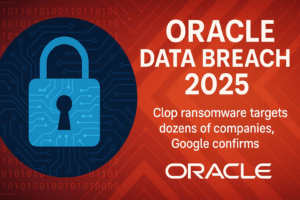On September 4, 2025, Tesla officially launched its long-awaited Robotaxi service through a new iOS app. Initially rolled out in Austin and San Francisco, the app allowed Tesla owners in those cities to join a waitlist for rides.
The launch quickly gained momentum, with early download numbers surpassing expectations. Reports indicated that first-day sign-ups outpaced Uber’s best launch periods by around 40% and were more than six times higher than Waymo’s strongest debut. The app even climbed into the top five overall rankings on Apple’s App Store, holding the top spot in the travel category for several days.
Tesla CEO Elon Musk has been vocal about the company’s ambitions, stating that the service could be available to “half the U.S. population by the end of the year.” For now, the rides are powered by Tesla’s Full Self-Driving (FSD) software, with safety operators still present in the vehicles. The pilot fleet primarily uses custom-modified Model Y SUVs.
Competing in the Autonomous Taxi Race
Tesla’s entry into the ride-hailing market puts it head-to-head with giants like Uber and Lyft, as well as autonomous specialists like Waymo. Where Tesla stands out is in its pricing, technology, and growth strategy.
- Pricing: Tesla’s fares are positioned to undercut rivals. In Austin trials, an 11-mile Robotaxi trip cost around $13.70, significantly cheaper than the $18–$31 riders might pay with Uber or the $22–$26 typically charged by Waymo for a similar journey. Analysts also noted examples where Tesla charged as little as $6.90 for a ride that would cost nearly $20 on Uber.
- Coverage & Access: At present, the Robotaxi service is geofenced to select areas, such as about 190 square miles in Austin. Access is limited to Tesla users who register through the app. By contrast, Uber and Lyft operate globally, while Waymo currently provides driverless services in a handful of U.S. cities including Phoenix, San Francisco, Los Angeles, Austin, and Atlanta. GM’s Cruise, another competitor, scaled back its expansion after funding was cut in 2024.
- Technology & Operations: Tesla is betting on a vision-only approach, using cameras and AI-powered FSD instead of expensive sensors like LiDAR. The company argues this approach makes scaling faster and more efficient, though critics point out that FSD still requires extensive validation. For now, trained safety operators remain onboard Tesla Robotaxis, while Uber relies on human drivers and Waymo gradually phases them out after years of testing.
Tesla’s ultimate strategy is clear: low-cost rides, rapid expansion, and broad consumer adoption. Musk has even suggested Robotaxi rides could eventually be “cheaper than owning a personal car,” underscoring Tesla’s aggressive positioning.
Regulatory Approvals and Expansion
Tesla’s ambitions are not limited to Texas. Currently, as of September 2025, Arizona’s Department of Transportation granted Tesla permission to begin supervised Robotaxi trials in Phoenix. The approval allows vehicles to operate with a safety driver, similar to the model tested in Austin.
Arizona has become a hub for autonomous vehicle trials, thanks to its supportive regulatory environment. Waymo has operated in Phoenix since 2020, and Tesla’s arrival adds new competition to the state’s AV landscape.
This milestone indicates Tesla’s readiness to scale beyond Texas. Regulatory reviews are also underway in California and Nevada, with Musk emphasizing that broader expansion will depend on securing official approvals.
Accessibility and Inclusive Mobility
One of the more notable developments in Tesla’s roadmap is its push for accessibility. In September, the company added an “Accessibility” option to its Robotaxi app, confirming plans to introduce wheelchair-accessible vehicles.
Musk has personally confirmed this commitment, pointing to Tesla’s upcoming “Robovan” – a minivan-style Robotaxi designed to accommodate wheelchair users. By integrating accessibility from the ground up, Tesla aims to extend the benefits of autonomous ride-hailing to passengers who are often underserved by existing services.
This step could set Tesla apart from competitors, as current ride-hailing platforms typically rely on separate paratransit offerings rather than integrating accessibility into their core fleets.
Final Thoughts
Tesla’s Robotaxi initiative represents one of the most ambitious shifts in the transportation industry. With its aggressive pricing, consumer interest, and regulatory breakthroughs, the program has the potential to redefine ride-hailing economics. If Tesla can deliver on its promises, competitors like Uber, Lyft, and Waymo may be forced to rethink their strategies.
Beyond cost, the societal impact could be profound. A widespread fleet of electric Robotaxis might reduce the need for personal car ownership, reshape traffic patterns in urban centers, and lower environmental impacts through greater reliance on EVs. On the accessibility front, Tesla’s commitment to wheelchair-friendly vehicles could make autonomous transport more inclusive than ever before.
At the same time, regulators face the challenge of keeping pace with these advancements. Arizona’s approval is an encouraging sign, but broader adoption will require frameworks that address safety, liability, and consumer trust.
In short, Tesla’s Robotaxi program may be at an early stage, but its rapid momentum suggests it could be a turning point for American mobility. Whether it reshapes the industry as dramatically as Musk predicts remains to be seen — but the first signs point to a future where autonomous, electric ride-hailing becomes a central part of everyday life.



